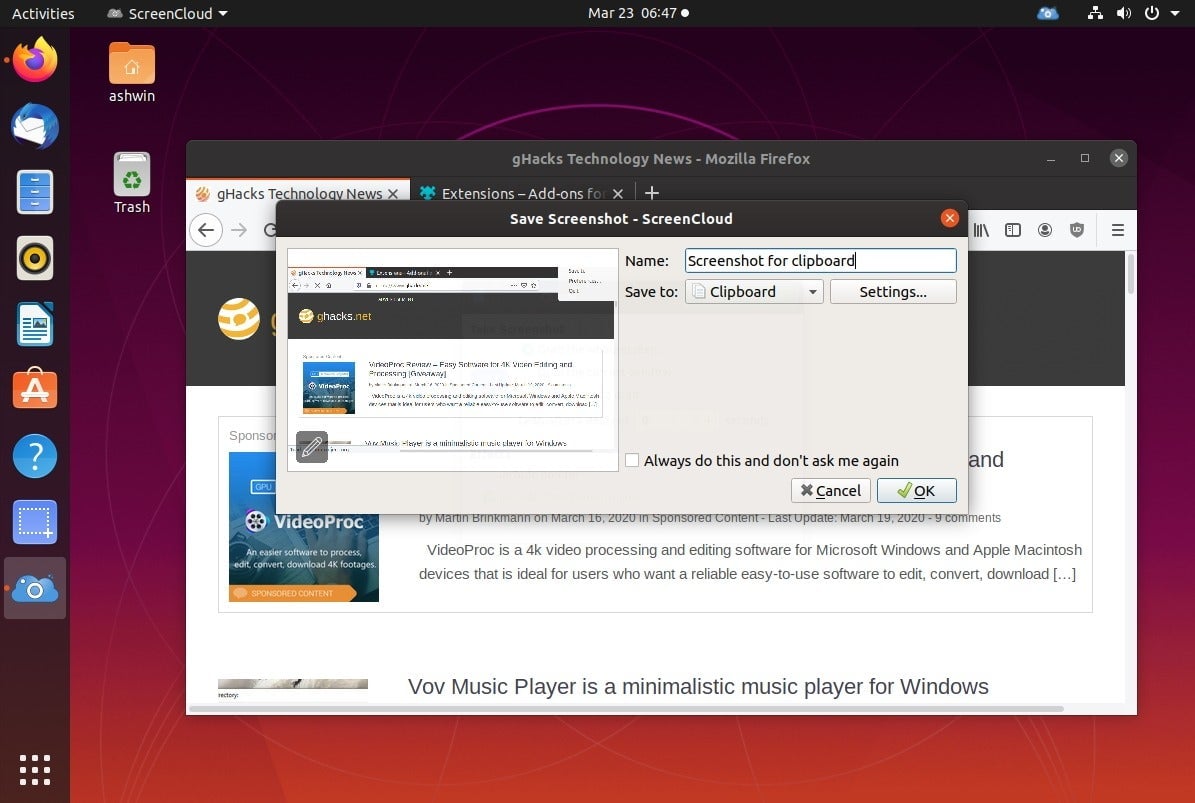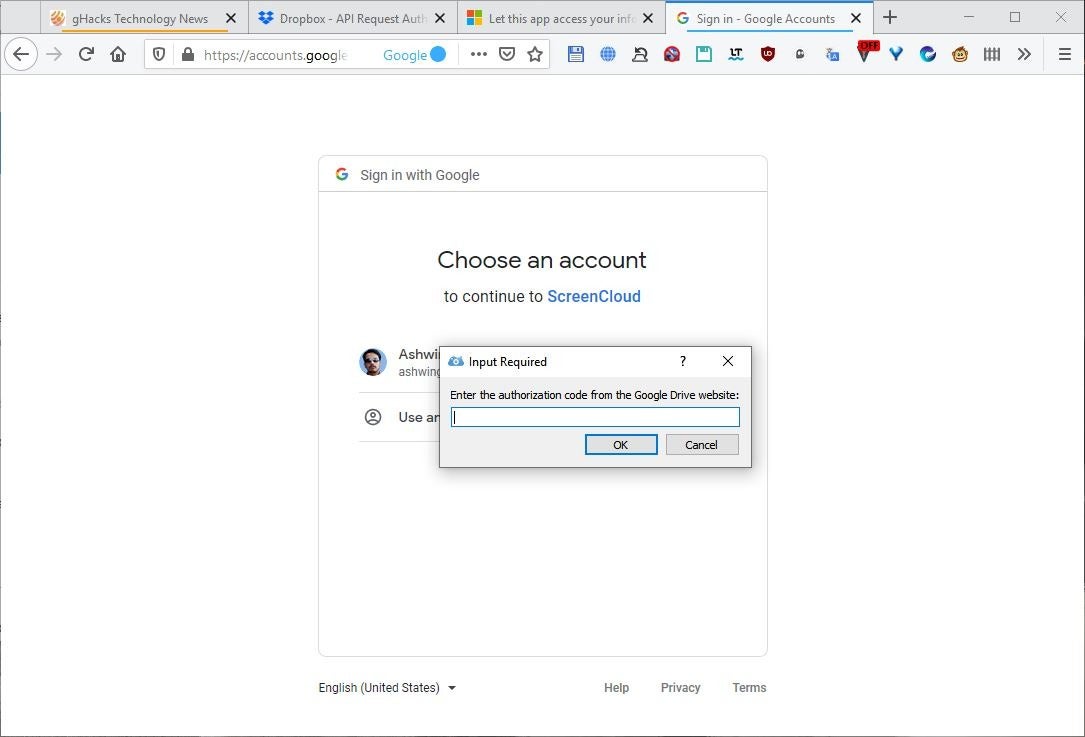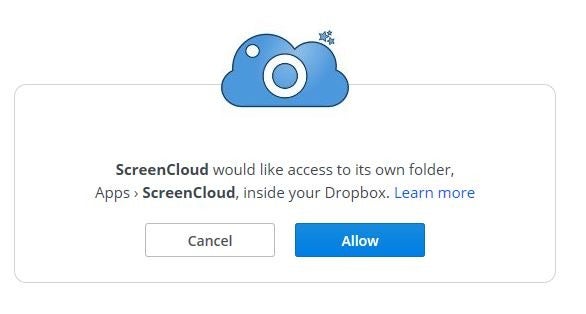We have reveiwed many screen capturing tools at gHacks including Ksnip, Automatic Screenshotter, Auto Screen Capture, Ashampoo’s Snap 11, or Martin’s favorite program PicPick.
Today, we take a look at a tool that can also optionally upload images to cloud services.

This is ScreenCloud, an open source image capturing tool for Windows, Linux and macOS.
During the program’s installation process you will be offered options to select from the following hosting services: Dropbox, Google Drive, Imgur, OneDrive, FTP, SFTP, Shell Script. Select the ones you wish to use and click next, and the program will install the corresponding plugins. You can install the plugins anytime from the Preferences screen as well.

ScreenCloud runs as a system tray program. Right-click (or left-click) on the icon to access its menu. There are three options which you can use to take a screenshot.

Capture Full screen saves all content displayed on the screen. Capture Selection freezes the current frame, and you can draw a box to save the content inside it. You’ll need to press the “Enter” key to save the capture. Capture Window takes a snapshot of the active window.
You can use the following keyboard shortcuts to capture the snapshots.
- Capture Full screen – Shift + Alt + 1
- Selection – Shift + Alt + 2
- Active windows – Shift + Alt + 3
Once a screenshot is taken, the program displays a pop-up window. This may be used to rename the screenshot, save it to the clipboard or one of the selected cloud services.

Note: The tray menu’s Capture Window option is buggy on Windows. It captured the status bar. I also had some trouble with the hotkey method while using it with Chromium Edge running in the background. It’s either that or after I enabled the “capture window borders” option. The program kept capturing partially blank or completely blank window screenshots.

With Edge closed however, it seemed to function normally. The Linux version works perfectly fine.
Image editor
Click on the image’s preview in the save screenshot window to open ScreenCloud’s built-in editor. The picture is displayed on the canvas in the middle of the screen. You can add an arrow, draw a rectangle or a circle, add some text, or numbered buttons using the tools available on the left side bar.

Instead of a blur tool, ScreenCloud comes with an obscure tool that pixelates the area upon which you use it. The panel on the right can be used to change the brush’s color and size. You can save screenshots in the PNG or JPG image formats. The General tab of the Preferences screen has an option to delay screenshots (in seconds), use it to take timed captures.
Uploading to cloud services
ScreenCloud can’t upload any image to a cloud service without logging into your account. That’s a plus in my opinion, because you don’t want to accidentally upload screenshots to the cloud if you don’t plan on doing so.
For those of you who want to save images to the cloud, here’s how to do that. Click on the Preferences option in the tray menu, and switch to the “Online services” tab. This is where you can add/remove cloud services and login to them. Double-click on the service you’d like to use with the program, and a new tab should open in your browser.
It uses OAuth to authorize the sign-in, and prompts you to allow ScreenCloud access to store data in your cloud drive. Don’t worry, it can only manage folders and files that it created or opened.
To finalize it, copy and paste the authorization code generated by the cloud service into the box that the program opened for connecting to your account. You may choose the screenshot naming pattern such as Screenshot at %H-%M-%S representing the time (hours, minutes, seconds) when the screenshot was taken. The result will be something like Screenshot at 19-45-00. Select the folder name that the application should save content to, and whether you want it to copy the public link to the clipboard after the uploading process has been completed.
Hit the save button and you’re all set to use it.
The application isn’t portable. The lack of a crop tool in ScreenCloud’s editor was a slight let down for me, but this is intended to be a basic screen capturing tool, besides I’m too used to ShareX’s options.







